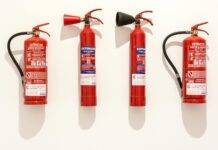
Emergency Action Plan Safety Quiz with MCQs and Answers
Emergency Action Plan Safety Quiz : In today’s fast-paced world, emergencies can strike at any moment. Whether it’s a natural disaster, a workplace accident, or a sudden health issue, being prepared can make all the difference. An Emergency Action Plan (EAP) is a critical tool that ensures the safety of individuals and the smooth functioning of organizations during unforeseen crises. To gauge your knowledge about EAPs and enhance your preparedness, we’ve put together an engaging Emergency Action Plan Safety Quiz with multiple-choice questions (MCQs) and detailed answers.
1. What is an Emergency Action Plan (EAP)?
An Emergency Action Plan, or EAP, is a written document that outlines the steps an organization or individual should take in the event of an emergency. It serves as a blueprint for responding to various crises, ensuring that everyone knows what to do to minimize harm and property damage.
2. The Importance of EAPs
Having a well-developed EAP is crucial for several reasons:
- Safety: EAPs prioritize the safety of people, reducing the risk of injuries or casualties during emergencies.
- Efficiency: They help organizations respond promptly and effectively, reducing downtime and potential financial losses.
- Compliance: Many regulatory bodies require businesses to have EAPs in place to ensure the safety of employees and the public.
3. Legal Requirements for EAPs
Depending on your location and industry, legal requirements for EAPs may vary. However, they often include:
- Detailed evacuation plans
- Procedures for reporting emergencies
- Clear communication methods
- Training for employees
4. Key Components of an EAP
4.1. Emergency Contact Information
Your EAP should include a list of key contacts, such as emergency services, medical facilities, and designated personnel responsible for emergency coordination.
4.2. Evacuation Procedures
Clearly defined evacuation routes and assembly points are essential for ensuring a safe exit during emergencies.
4.3. Communication Plan
An effective EAP should outline how information will be communicated during an emergency, both internally and externally.
4.4. Roles and Responsibilities
Designate roles and responsibilities for specific individuals or teams, ensuring that everyone knows their duties in an emergency.
5. Creating an Effective EAP
5.1. Risk Assessment
Identify potential risks and hazards specific to your location and operations. This forms the foundation of your EAP.
5.2. Employee Training
Regular training sessions help employees understand the EAP and their roles in executing it.
5.3. Regular Drills and Exercises
Conducting mock emergency drills ensures that everyone can respond effectively when a real crisis occurs.
6. Quiz: Test Your EAP Knowledge
Now that you have a basic understanding of EAPs, let’s put your knowledge to the test with our Emergency Action Plan Safety Quiz.
1. What does EAP stand for?
a) Emergency Authorization Protocol
b) Evacuation and Alert Procedure
c) Emergency Action Plan
d) Event Announcement Protocol
Answer: c) Emergency Action Plan
2. Why are EAPs important for organizations and individuals?
a) They increase profits
b) They provide entertainment
c) They ensure safety during emergencies
d) They improve employee morale
Answer: c) They ensure safety during emergencies
3. What is a key component of an EAP that outlines where people should gather during an evacuation?
a) Emergency Contact Information
b) Evacuation Procedures
c) Communication Plan
d) Roles and Responsibilities
Answer: b) Evacuation Procedures
4. How often should EAP drills be conducted in organizations?
a) Monthly
b) Annually
c) Biannually
d) Never
Answer: b) Annually
5. Who should be included in the list of emergency contacts in an EAP?
a) Only senior management
b) Only employees
c) Emergency services, medical facilities, and designated personnel
d) Friends and family members
Answer: c) Emergency services, medical facilities, and designated personnel
6. What is the purpose of a risk assessment in creating an EAP?
a) To increase insurance premiums
b) To identify potential risks and hazards
c) To create panic among employees
d) To increase workplace stress
Answer: b) To identify potential risks and hazards
7. Can an EAP be modified and updated?
a) No, it should remain unchanged
b) Yes, it should be reviewed and updated regularly
c) Only once every decade
d) Only when a major emergency occurs
Answer: b) Yes, it should be reviewed and updated regularly
8. What should you do if you encounter someone who is not following the EAP during an emergency?
a) Ignore them
b) Report them to the authorities
c) Gently remind them of the EAP procedures if safe to do so
d) Shout at them for not following the plan
Answer: c) Gently remind them of the EAP procedures if safe to do so
9. Who benefits from having an EAP in place?
a) Only employees
b) Only the organization
c) Both employees and the organization
d) Only government agencies
Answer: c) Both employees and the organization
10. What is the primary purpose of an EAP quiz like this one?
a) To entertain readers
b) To evaluate knowledge and enhance preparedness
c) To provide medical advice
d) To promote a specific product
Answer: b) To evaluate knowledge and enhance preparedness
Air Contaminants and Dust Safety Quiz
7. Why Multiple-Choice Questions?
Multiple-choice questions are an effective way to assess knowledge. They provide a clear structure for testing understanding and offer instant feedback.
8. Conclusion
Emergency Action Plans are not just pieces of paper; they are lifelines during crises. By understanding their importance and the key components, you can contribute to a safer environment for yourself and others.
9. FAQs
Q1: Are EAPs only necessary for businesses?
EAPs are essential for businesses, but they are also valuable for individuals and households to prepare for emergencies effectively.
Q2: How often should EAP drills be conducted?
Regular EAP drills should be conducted at least annually, with additional training for new employees.
Q3: Can an EAP be modified?
Yes, an EAP should be reviewed and updated regularly to reflect changes in the environment, personnel, or operations.
Q4: Are there templates available for creating EAPs?
Yes, many organizations provide EAP templates, but it’s crucial to customize them to your specific needs.
Q5: What should I do if I encounter someone who doesn’t follow the EAP during an emergency?
If safe to do so, gently remind them of the EAP procedures. Safety should always be the top priority.





















